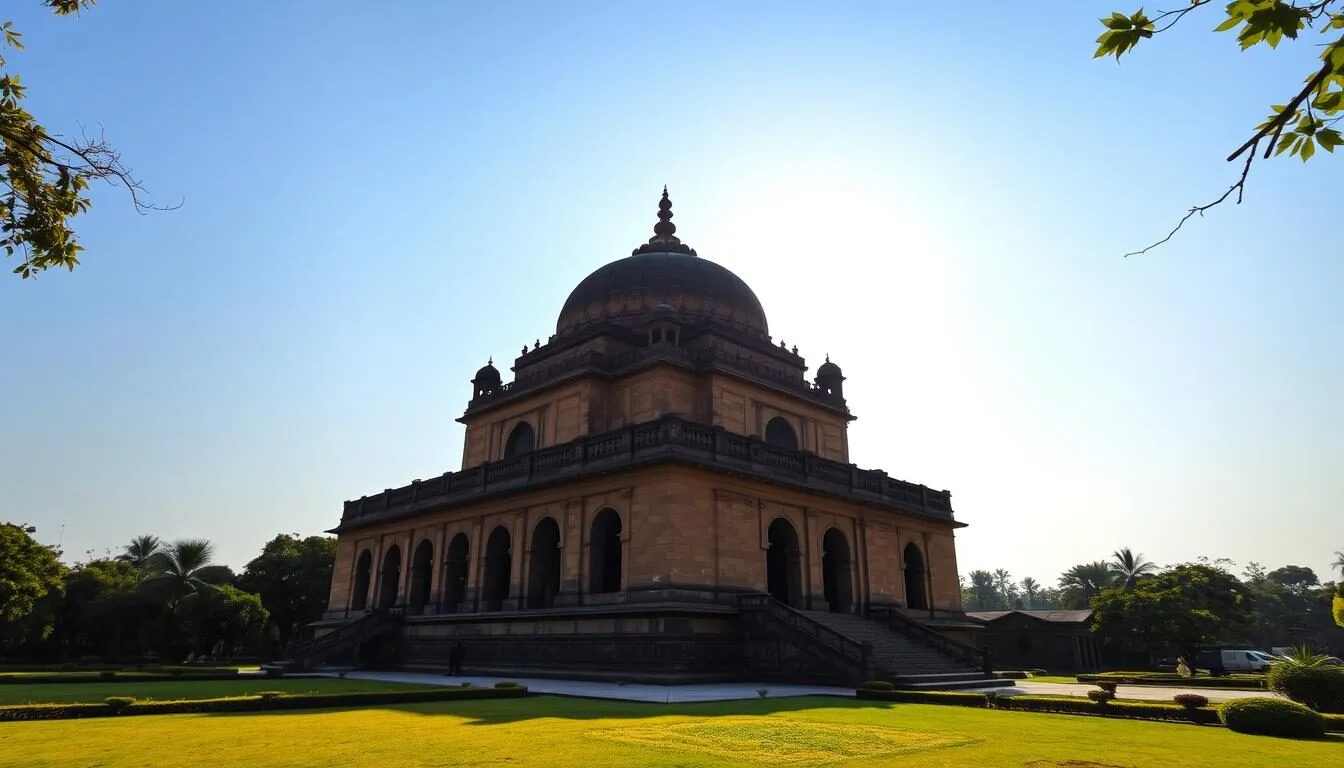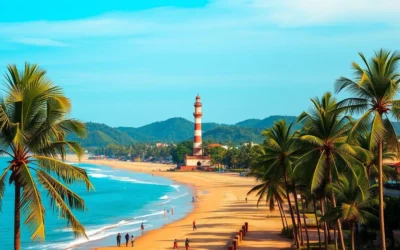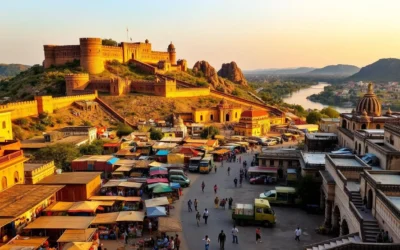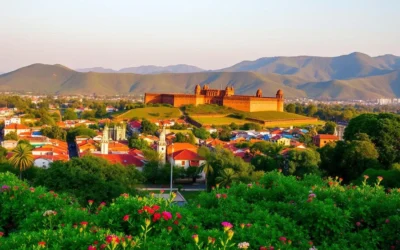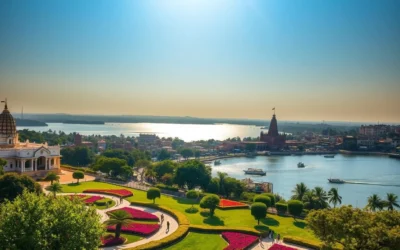✓ Accommodations ✓ Flights ✓ Rental Cars
You are about to explore one of Karnataka’s most treasured heritage destinations – the magnificent historical city of Bijapur. With over 50 mosques, more than 20 tombs, and numerous palaces and ruins, this medieval city is a cultural melting pot where Persian, Turkish, and indigenous architectural styles blend seamlessly.
As you wander through the city’s historic sites, you’ll discover the significance of Bijapur as a hub of cultural and architectural heritage. The city’s iconic monuments, including the Gol Gumbaz and Ibrahim Rauza, are a testament to its rich history. Get ready to uncover the best places to visit in this historically significant city.
With its unique blend of architectural styles and historical significance, Bijapur ranks among the top 10 most visited cities in Karnataka, attracting history enthusiasts and architecture lovers from around the world.
Discovering the Historical City of Vijayapura
As you step into the historical city of Vijayapura, you’re immediately immersed in a rich tapestry of history and heritage. This city, with its deep-rooted past, is a testament to the region’s cultural and architectural evolution over the centuries.
The City of Victory: A Brief Overview
Vijayapura, literally translating to “City of Victory,” has been a significant cultural and architectural hub since its establishment between the 10th and 11th centuries by the Kalyani Chalukyas dynasty. The city’s strategic location made it a prized possession for various rulers, including the Sultan of Delhi, Allaudin Khilji, by the end of the 13th century, and later the Bahamani kings of Bidar in 1347. This transition under different dynasties, including the Adil Shahi dynasty, contributed to its rich history and heritage.
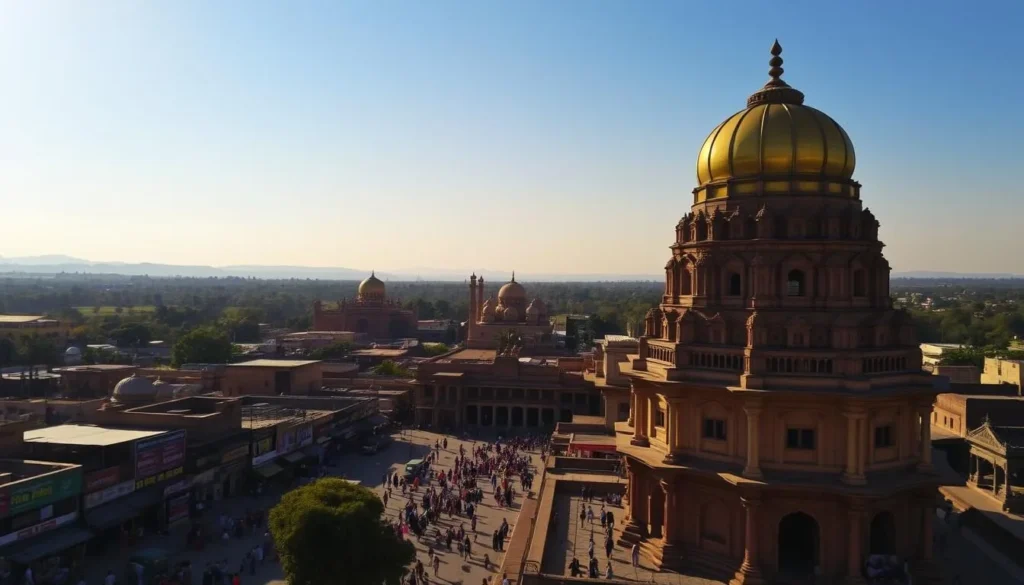
From Vijaypura to Bijapur: The Evolution of a Name
The city, originally known as Vijayapura, underwent a name change to Bijapur, which was used until 2014 when it was officially renamed back to Vijayapura. This change reflected the city’s historical significance and its status as a city of victory. The Adil Shahi dynasty played a crucial role in shaping the city’s architecture and cultural landscape during their rule.
| Period | Ruling Dynasty | Significant Events |
|---|---|---|
| 10th-11th centuries | Kalyani Chalukyas | Establishment of Vijayapura |
| End of 13th century | Sultan of Delhi (Allaudin Khilji) | Came under Muslim influence |
| 1347 | Bahamani kings of Bidar | Transition under Bahamani rule |
| 15th-16th centuries | Adil Shahi dynasty | Significant architectural and cultural developments |
Rich Historical Background of Bijapur
You can explore the rich history of Bijapur, a city that has witnessed the rise and fall of various dynasties. The city’s historical significance is evident in its monuments and architectural heritage.
The Chalukya Foundation
The Chalukya dynasty laid the foundation for Bijapur’s architectural and cultural development, establishing it as an important center in medieval South India. Their influence can still be seen in the city’s historic structures.
The Golden Age Under Adil Shahi Dynasty
Under the Adil Shahi Dynasty, particularly during the 15th to 17th centuries, Bijapur witnessed a golden age. The construction of magnificent palaces, mosques, and mausoleums took place during this time, showcasing the dynasty’s patronage of art and architecture.
Cultural Melting Pot of South India
Bijapur became a cultural melting pot where Hindu, Muslim, and Jain cultures blended harmoniously. This blend is reflected in the city’s unique architectural style and cultural heritage. The city attracted musicians, artists, and scholars from various fields, contributing to its rich cultural landscape.
| Dynasty | Contribution | Notable Features |
|---|---|---|
| Chalukya | Foundation of Architecture | Historic Structures |
| Adil Shahi | Golden Age of Monuments | Palaces, Mosques, Mausoleums |
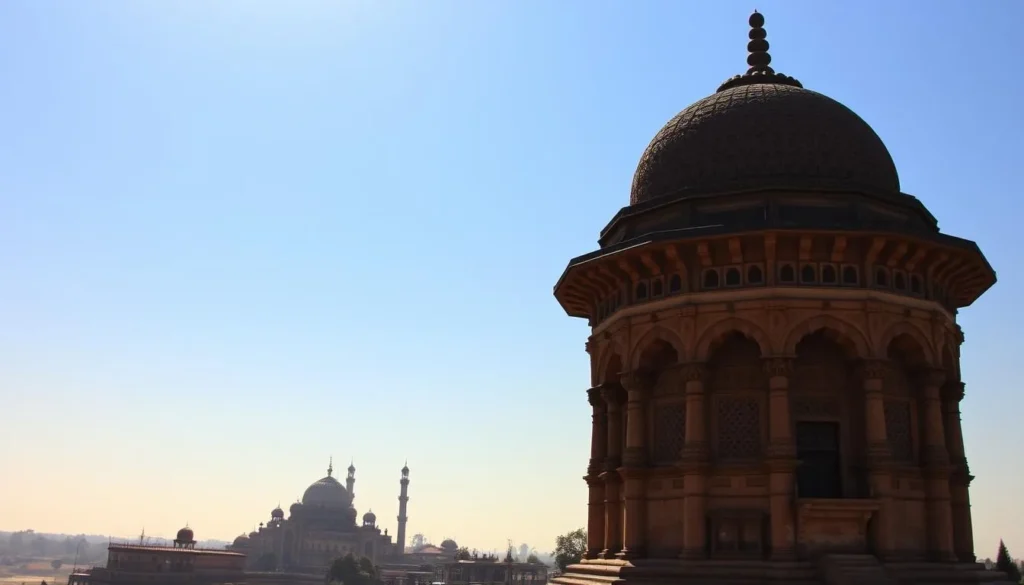
Gol Gumbaz: The Magnificent Dome
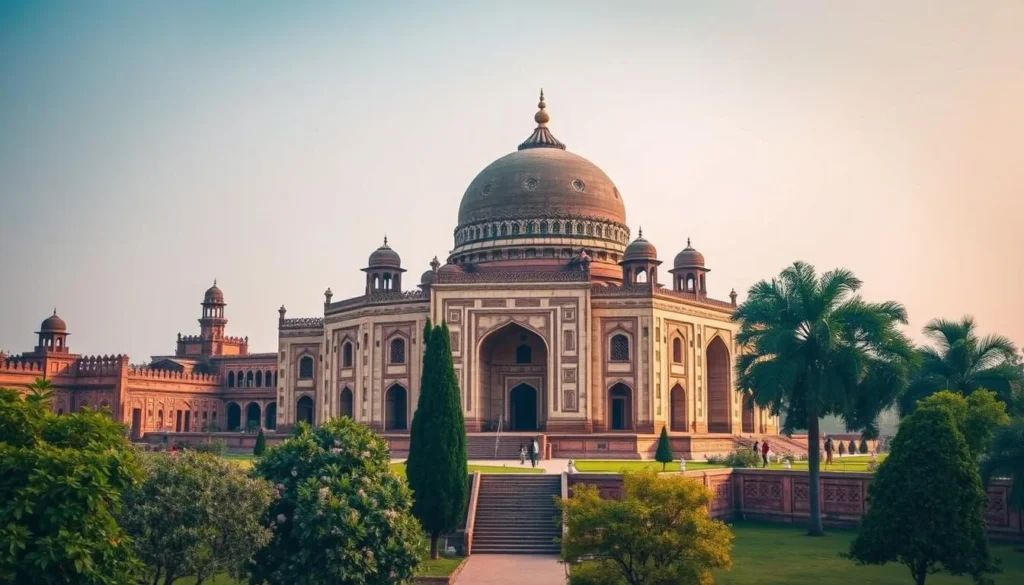
As you step into Bijapur, Karnataka, the majestic Gol Gumbaz is an absolute must-visit attraction that will leave you awestruck. This magnificent structure, built by Sultan Mohammed Adil Shah, is a testament to the region’s rich historical heritage.
Architectural Marvel and World’s Second Largest Dome
Gol Gumbaz is home to the second-largest dome in the world, surpassed only by St. Peter’s Basilica in Rome. The dome, spanning 44 meters in diameter, is an engineering marvel that has stood the test of time. This magnificent 210-foot high mausoleum features impressive architectural elements, including seven-storied octagonal spires at the four corners.
The Whispering Gallery Experience
One of the unique attractions within Gol Gumbaz is the “Whispering Gallery,” where even the softest sounds can be heard clearly across the dome due to its unique acoustic properties. You can experience this phenomenon by whispering against the wall and hearing it travel to the opposite side.
Vijayapura Archaeological Museum
Located close to Gol Gumbaz, the Vijayapura Archaeological Museum showcases preserved artifacts and antiquities from the Bijapur region. You can explore the historical significance of this structure and the surrounding area through the museum’s collections.
When you visit Gol Gumbaz, you can marvel at its grandeur, explore the mausoleum, experience the Whispering Gallery, and discover the historical significance of this iconic structure. With its massive dome and impressive architectural elements, Gol Gumbaz is considered one of the must-visit places in Bijapur and a highlight of any trip to Karnataka.
Ibrahim Rauza: Inspiration for the Taj Mahal
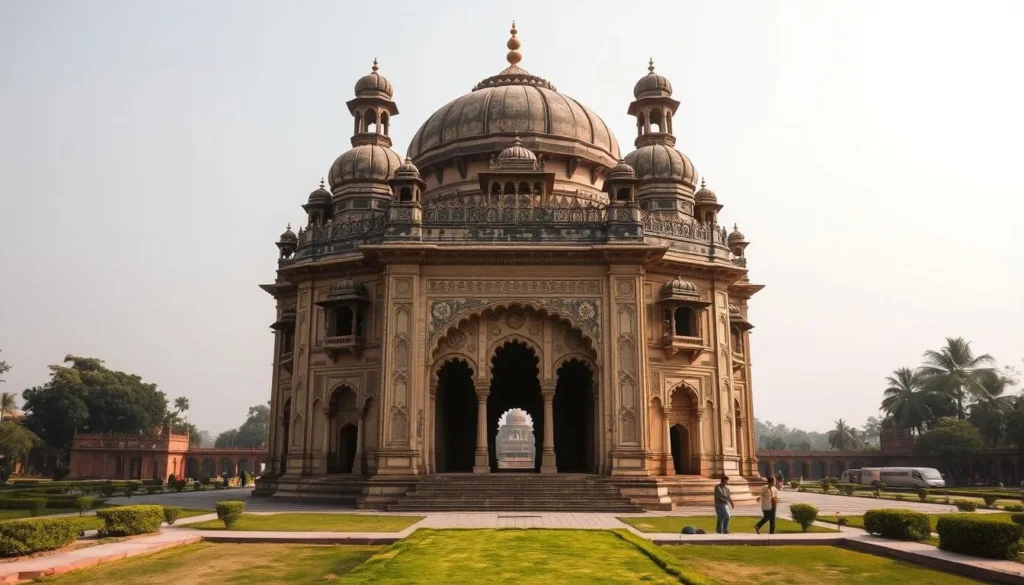
As you explore the historical city of Bijapur, you’ll come across the magnificent Ibrahim Rauza, a monument that is said to have inspired the design of the Taj Mahal. This exquisite mausoleum is a testament to the rich cultural heritage of the region.
The Mausoleum of Ibrahim Adil Shah II
Ibrahim Rauza is the final resting place of Sultan Ibrahim Adil Shah II and his beloved wife. The mausoleum is a masterpiece of Persian-Muslim architecture, showcasing intricate carvings, majestic minarets, and beautiful arches. The entire complex was designed on a single rock slab, demonstrating the advanced architectural knowledge of the period.
Exquisite Persian-Muslim Architecture
The monument boasts of different stone awnings, decorative windows, and arches, making it a breathtaking sight to behold. You can appreciate the symmetry and proportions of the twin structures – the tomb and mosque – separated by a garden, creating a harmonious balance that characterizes this architectural masterpiece.
Some of the key highlights of Ibrahim Rauza include:
- Discover Ibrahim Rauza, widely considered one of the most beautifully proportioned Islamic monuments in India and said to have inspired the design of the Taj Mahal.
- Explore this exquisite mausoleum built for Sultan Ibrahim Adil Shah II and his beloved wife, representing the pinnacle of Persian-Muslim architectural style in the city.
- Marvel at the remarkable engineering feat – the entire complex was designed on a single rock slab, showcasing the advanced architectural knowledge of the period.
Jami Masjid: South India’s Largest Mosque
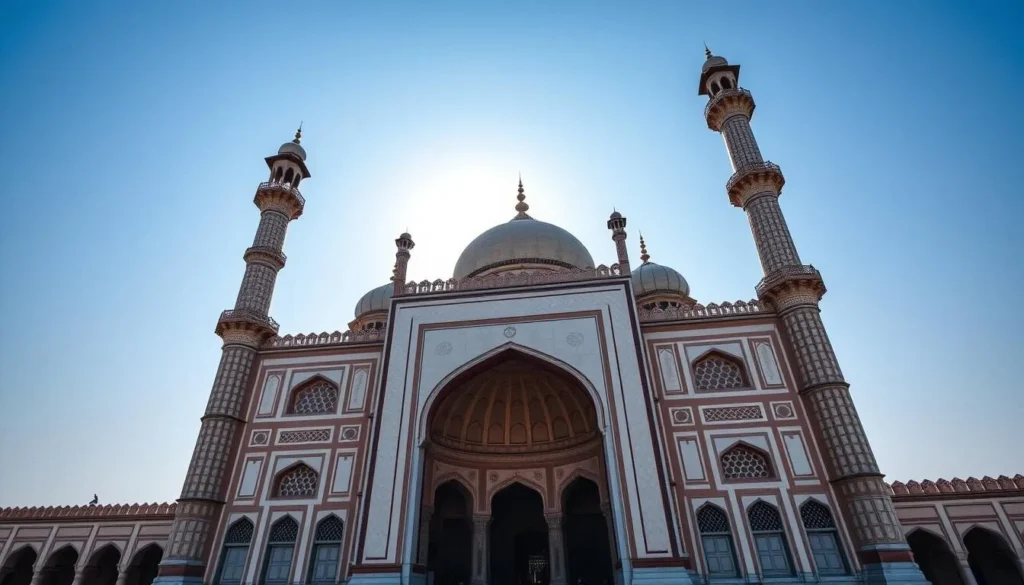
The city of Bijapur is home to the magnificent Jami Masjid, a marvel of Indo-Islamic architecture that has stood the test of time. Founded by Ali Adil Shah I after his victory over the Vijayanagar Kings, it is the oldest and largest mosque in South India.
Historical Significance and Construction
Jami Masjid occupies an impressive area of approximately 116,600 square meters, making it one of the city’s most significant architectural achievements. The construction of this massive religious structure is a testament to the Adil Shahi dynasty’s religious and cultural contributions.
Architectural Features and Quranic Inscriptions
The dome of Jami Masjid is a notable feature, exemplifying Indo-Islamic architecture. The central wall is adorned with lines from the Holy Quran etched in exquisite calligraphy, showcasing the artistic excellence of the Adil Shahi period. The minarets and elegant arches add to the mosque’s grandeur.
Bara Kaman: The Unfinished Wonder
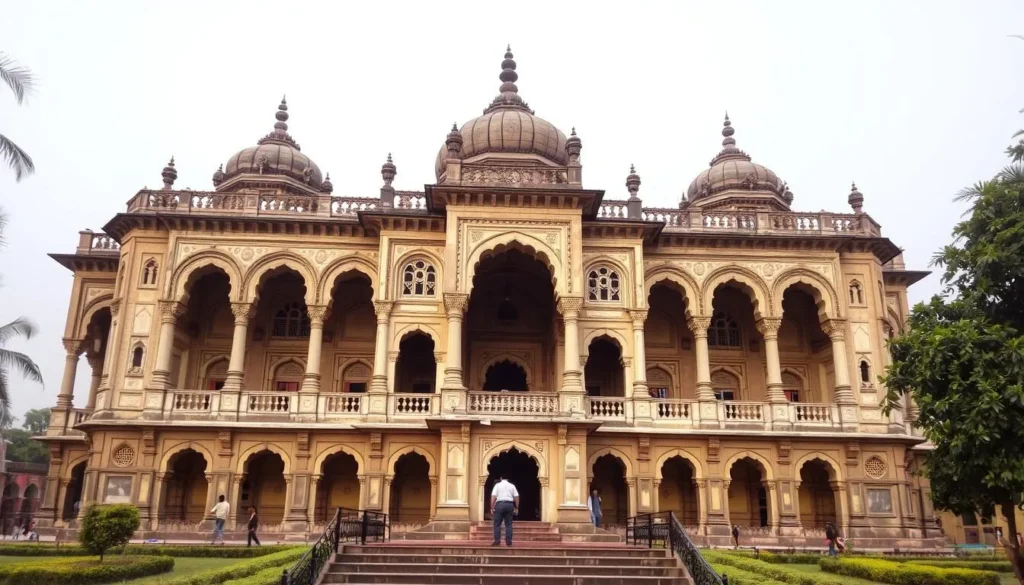
In the heart of Vijayapura lies Bara Kaman, an unfinished yet fascinating structure that continues to captivate visitors. This magnificent monument, with its 12 graceful arches, is a testament to the architectural ambitions of the Adil Shahi dynasty.
The Incomplete Mausoleum of Ali Adil Shah II
Bara Kaman is essentially the incomplete mausoleum of Ali Adil Shah II, whose construction began with great ambition but was never completed. It is believed that this royal tomb was intended to rival the grandeur of Gol Gumbaz, another iconic monument in Bijapur.
The 12 Graceful Arches
The name “Bara Kaman” translates to “twelve arches” in Urdu, highlighting the distinctive feature of this monument. The 12 arches showcase the architectural style of the period and add to the beauty of this unfinished wonder. As you explore this monument, you’ll appreciate the elegant proportions and design elements that continue to captivate visitors with their haunting beauty and historical significance.
Some of the key aspects to discover at Bara Kaman include:
- Discover Bara Kaman, the magnificent unfinished mausoleum of Ali Adil Shah II that remains one of the city’s most intriguing monuments despite its incomplete state.
- Marvel at the 12 graceful arches that give this structure its name, showcasing the architectural ambition of the period.
- Learn about the mysterious circumstances surrounding this royal tomb, whose construction began with great ambition but was never completed.
- Understand why Bara Kaman is often referred to as the “rival of Gol Gumbaz” – it was likely intended to surpass the famous dome in grandeur and scale.
Gagan Mahal: The Sky Palace
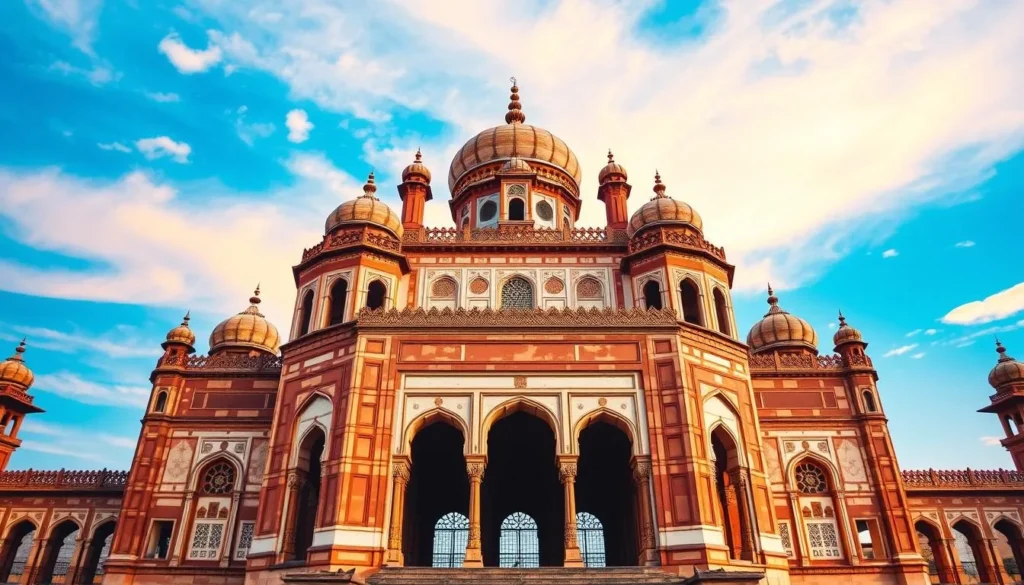
The Gagan Mahal, or ‘Sky Palace,’ is an architectural marvel that showcases the blend of Persian, Turkish, and indigenous styles characteristic of Bijapur’s palaces. Built by Ali Adil Shah I around 1561, this structure served as both a royal residence and a Durbar Hall, or meeting hall.
The Great Central Arch
The main attraction of Gagan Mahal is its great central arch, spanning an impressive 60 feet and 9 inches. This exquisite example of Indo-Islamic architecture is a highlight of the palace, demonstrating the advanced engineering skills of the time.
Royal Residence and Durbar Hall
The functional layout of Gagan Mahal is noteworthy, with the Darbar or assembly hall located on the ground floor and the upper floors serving as the royal family’s private residence. This historic structure provides a glimpse into the opulent lifestyle of Bijapur’s ruling elite during the Adil Shahi period.
As you explore Gagan Mahal, you’ll appreciate the harmonious blending of architectural elements that characterize Bijapur’s most important palaces. The use of arches creates spacious, well-ventilated interiors suitable for the local climate, showcasing the innovative architectural techniques employed in its construction.
Malik-e-Maidan: The Monarch of Plains
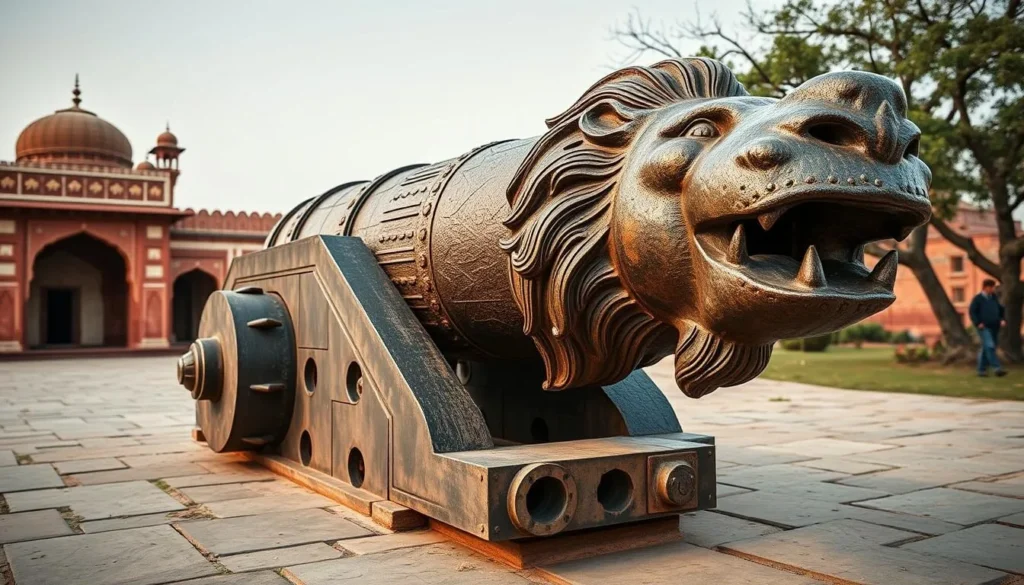
You’ll be amazed by the sheer scale and historical significance of Malik-e-Maidan, one of the world’s most impressive medieval cannons. This massive artillery piece is a must-visit attraction in Bijapur, reflecting the city’s rich military history.
A Colossal Medieval Cannon
Malik-e-Maidan, which translates to “Monarch of the Plains,” is indeed a monarch among cannons. Weighing a staggering 55 tons and measuring 4 meters in length, it’s an awe-inspiring sight. The cannon’s muzzle, shaped like a lion’s head with an elephant in its teeth, is a symbol of the military might of the city. As one of the esteemed places visit in Bijapur, it offers a glimpse into the region’s historical significance.
The Legend of the Lion-Shaped Muzzle
The distinctive lion-shaped muzzle of Malik-e-Maidan is not just a marvel of craftsmanship but also steeped in legend. It’s said that when the cannon was fired, the sounds it produced were so deafening that the gunner had to dip his head in a water tank to protect his ears. This massive “boom” is a testament to the cannon’s power and the engineering prowess of its creators, making it one of the notable places to explore in Bijapur.
Mehtar Mahal: The Sweeper’s Palace
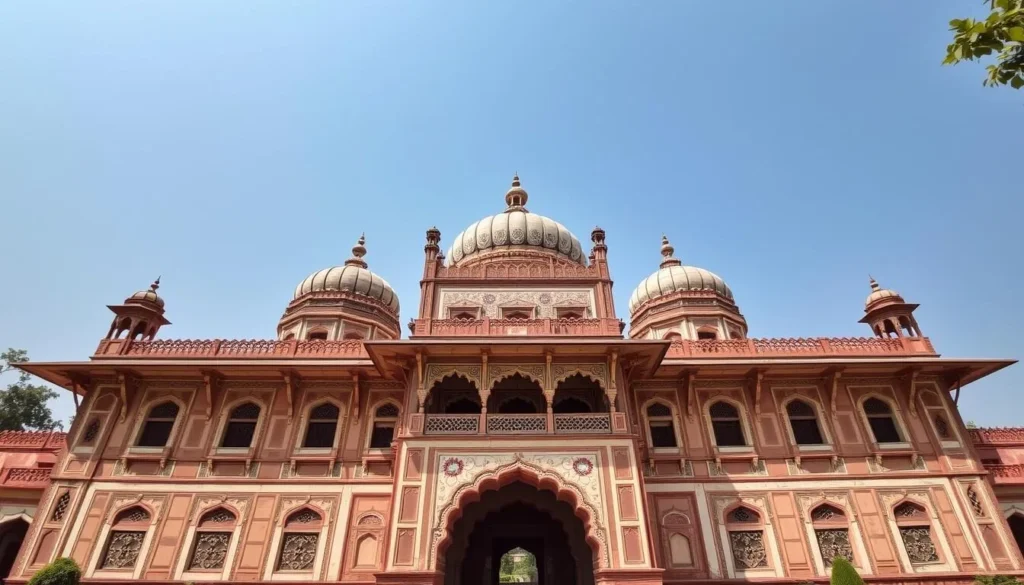
The Mehtar Mahal in Bijapur is an architectural marvel that dates back to 1620. Located inside the Bijapur Fort grounds, it stands as one of the most luxurious structures within the fort complex. You can explore this historical gem and appreciate its unique blend of architectural styles.
Indo-Saracenic and Hindu Architectural Fusion
Mehtar Mahal is a remarkable example of the fusion of Indo-Saracenic and Hindu architectural styles. The structure showcases a delicate balance between Islamic architectural elements, such as arches and minarets, and Hindu decorative motifs. This blend of styles makes Mehtar Mahal a unique monument in Bijapur’s city, reflecting the cultural synthesis that occurred during the 17th century.
Intricate Carvings and Minarets
The minarets of Mehtar Mahal are adorned with exquisite carvings that demonstrate the high level of artistic skill achieved during the 17th century. You can marvel at the intricate details of the stone carvings on the gateway, which feature floral patterns and geometric designs typical of the period. The palace’s art and architecture are a testament to the craftsmanship of the era.
Bijapur Fort and Upli Burj
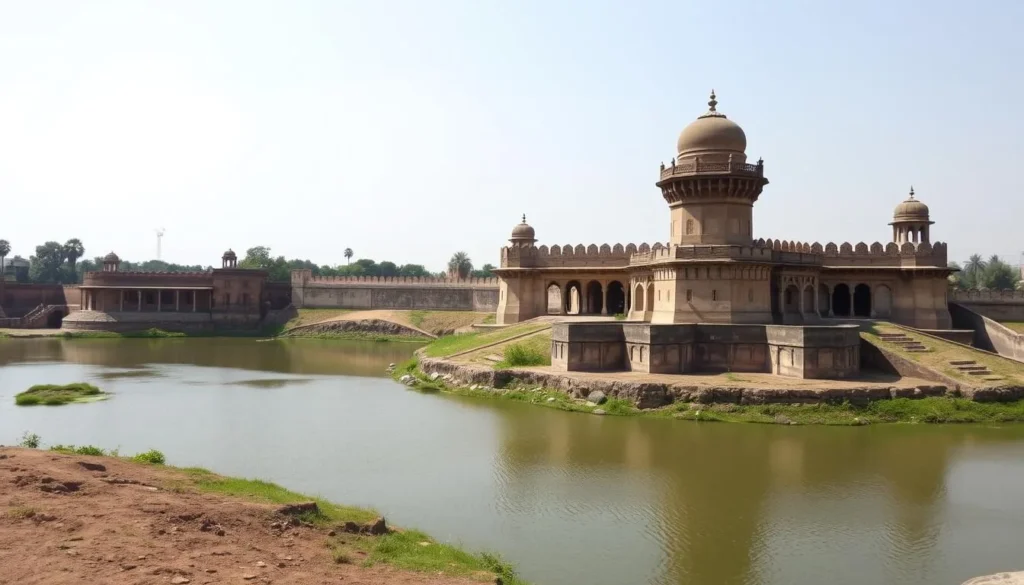
As you explore the historical city of Bijapur, you’ll discover the Bijapur Fort, a monumental structure that stands as a testament to the region’s rich history. The fort, established during the Adilshah dynasty’s reign, is affectionately known as “South India’s Agra” due to its architectural significance.
The Protective Moat and Fort Structure
The Bijapur Fort is surrounded by a massive 50-foot moat, a defensive feature that protected the city from invaders for centuries. Inside the fort, numerous structures built by various dynasties over time add to its historical richness.
Upli Burj: The Watchtower Viewpoint
Upli Burj, a 24-meter high watchtower designed by Hyder Khan in the 16th century, offers panoramic views of Bijapur. You can climb the winding circular staircase to reach the top, where two large cannons are mounted, providing insight into the military technology of the period.
Sacred Temples of Vijayapura
As you explore Vijayapura, you’ll discover a multitude of temples that reflect the region’s deep-rooted spiritual traditions. The city, known for its historical mosques, also boasts a rich tapestry of sacred sites that are worth visiting.
Shivagiri Temple: Home to the Second Largest Shiva Statue
The Shivagiri Temple is a major pilgrimage site, featuring the second-largest Shiva statue in the country. Standing at an impressive 85 feet tall and weighing around 1500 tons, this massive statue is a marvel. A smaller Shivalinga idol is installed beneath the giant statue, adding to its significance.
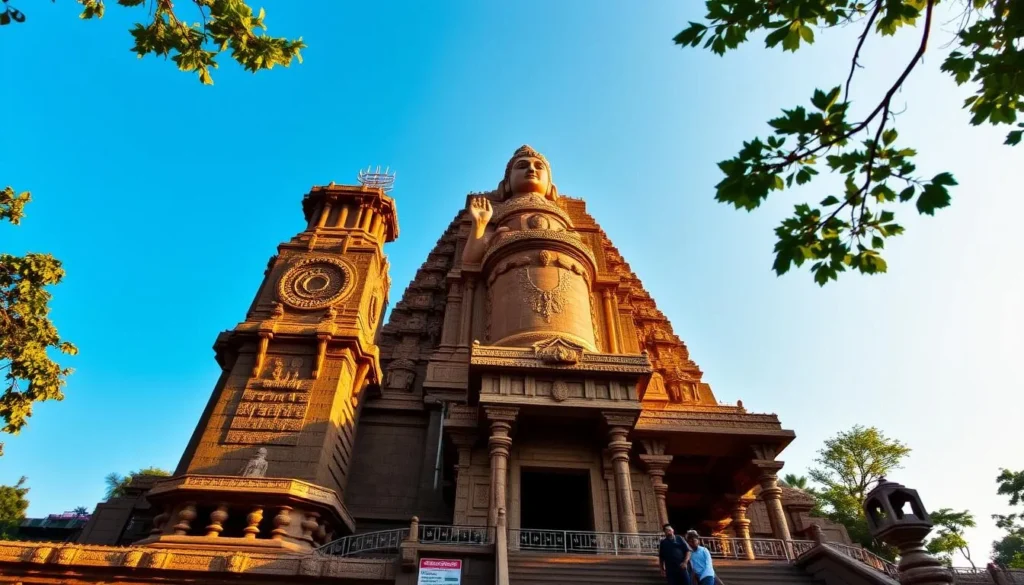
Sahasraphani Parshwanatha Basadi: The 1008-Headed Snake
Located on the outskirts of Vijayapura, the Sahasraphani Parshwanatha Basadi is a remarkable Jain temple. It houses a 1500-year-old idol of Lord Parshwanatha adorned with a 1008-headed snake. Devotees offer milk to the deity on full moon and new moon days, creating a unique ritual where the milk travels through the snake’s heads before covering the idol.
Other Important Temples in the Region
Vijayapura is dotted with other significant temples, including those at Thi Yelagur, Tikota, Sindgi, Salotgi, Indi, Almel, and Agarkhed. Each of these sites has its own religious and architectural importance, contributing to the rich heritage of the region.
Unique Experiences in Bijapur, Karnataka: Best Things to Do – Top Picks
Bijapur is not just about historical landmarks; it’s a city that invites you to immerse yourself in its vibrant culture. As you explore this ancient city, you’ll discover a plethora of unique experiences that make your visit truly memorable.
Shopping for Local Handicrafts and Ilkal Saris
Shopping for local handicrafts is a must-do activity when visiting Bijapur. You can take home some exquisite Lumbini Jewellery pieces, crafted exclusively by the region’s local tribal artisans. The city is also famous for its Ilkal Saris, a traditional weave that features distinctive red borders and is considered one of Karnataka’s most beautiful textile traditions. Additionally, you can find beautiful sandalwood products that make perfect souvenirs.
Exploring the Vibrant Bazaars
The vibrant bazaars of Bijapur offer a glimpse into the city’s cultural tapestry. As you wander through the bustling markets, you’ll be surrounded by colorful wares and traditional goods. You can sample local delicacies, shop for handicrafts, and interact with friendly local vendors. Visiting markets near major monuments like Gol Gumbaz and Gagan Mahal allows you to combine sightseeing with cultural experiences, making your visit to Bijapur a multi-sensory experience.
| Experience | Location | Highlights |
|---|---|---|
| Shopping for Handicrafts | Local Bazaars | Lumbini Jewellery, Ilkal Saris, Sandalwood Products |
| Exploring Bazaars | Near Gol Gumbaz, Gagan Mahal | Local Delicacies, Traditional Goods, Cultural Interactions |
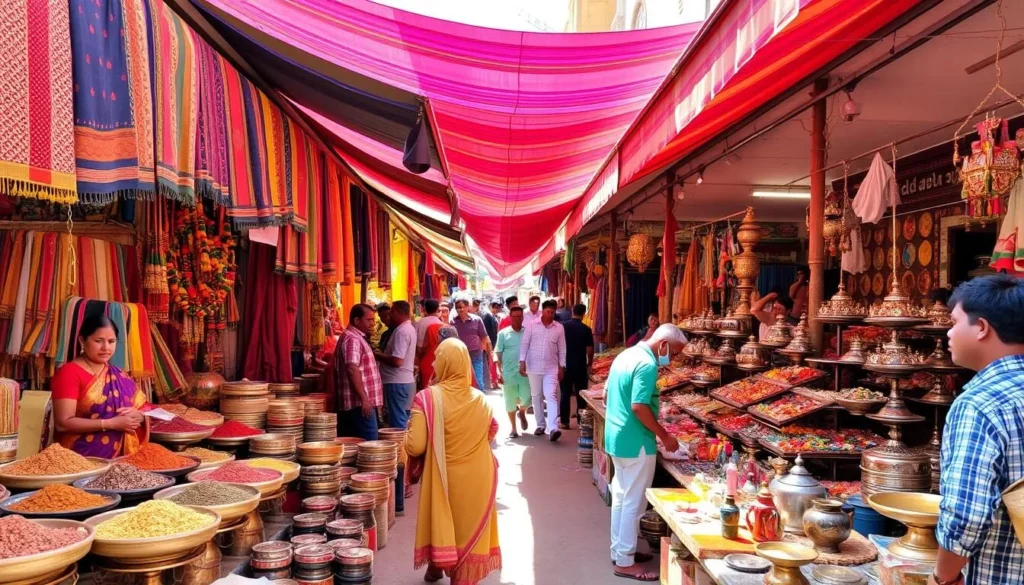
Practical Information for Visitors
To make the most of your visit to Bijapur, understanding the practical aspects is crucial. Planning your trip during the post-monsoon season, from October to February, ensures a pleasant experience as the weather is comfortable for exploring the city’s numerous monuments.
Best Time to Visit Bijapur
The best time to visit Bijapur is from October to February. The weather is pleasant, making it ideal for visiting monuments like Gol Gumbaz.
How to Reach: By Air, Train, and Road
Bijapur is well-connected by road and rail. The closest airport is in Kalaburagi, approximately 166 km away. You can also reach Bijapur by train, as it has a well-connected railway station. By road, KSRTC bus services are available from Bangalore and other major towns.
Nearby Attractions Worth Exploring
Some popular places to visit near Bijapur include Badami, Pattadakal, Aihole, Koppal, Hampi, Lakkundi, Gadag-Betageri, and Kudala Sangama. These historically significant sites are worth exploring.
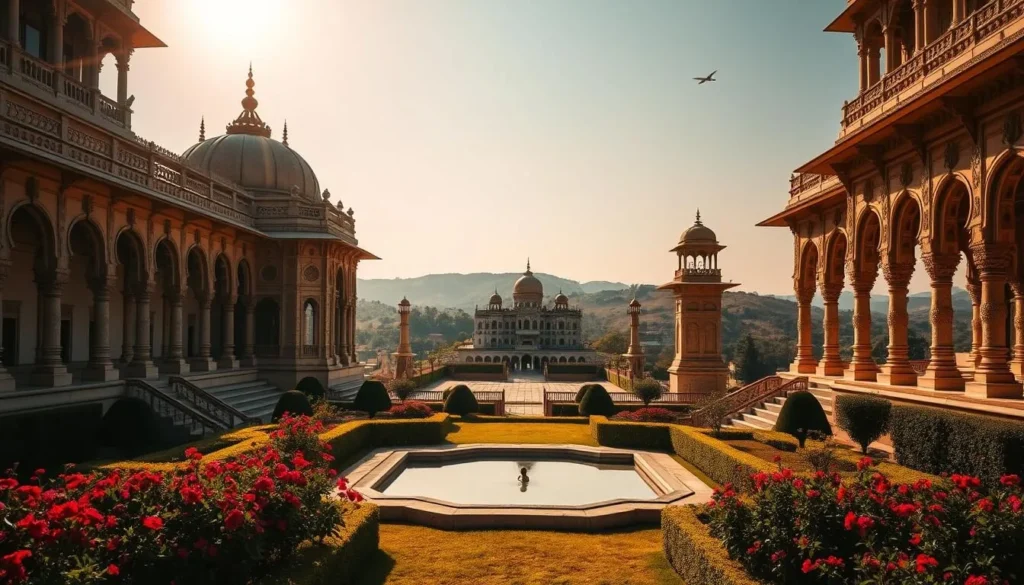
Conclusion: The Enduring Legacy of Bijapur
The city of Bijapur, now known as Vijayapura, stands as a testament to the grandeur of the Adil Shahi dynasty. As you reflect on your visit, the magnificent monuments like Gol Gumbaz with its massive dome and Ibrahim Rauza with its elegant proportions, showcase the remarkable achievements of medieval Indian architecture.
Bijapur’s historical significance lies in its blend of Persian, Turkish, and indigenous architectural styles, creating a unique aesthetic characterized by graceful arches and imposing domes. The city’s name change reflects its ongoing connection between past glory and present identity. Preserving these monuments is crucial as part of India’s national heritage and as educational resources for understanding the artistic accomplishments of the Adil Shahi dynasty.
As you plan your return visit to explore more of this remarkable city’s treasures, you’ll appreciate the cultural synthesis that occurred in Bijapur, where Hindu and Islamic traditions merged to create some of the most beautiful architectural works in the world.
—
The above is subject to change.
Check back often to TRAVEL.COM for the latest travel tips and deals.
